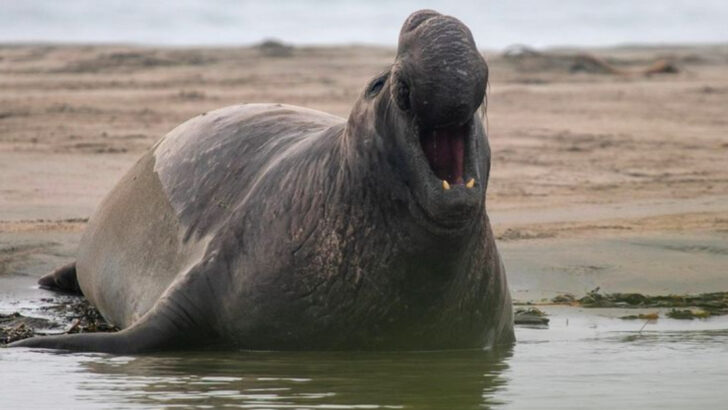They weren’t built for the sea—so they rewrote the rules.
Some of the greatest ocean dwellers on Earth didn’t start out as swimmers. These are land-born mammals that dove headfirst into saltwater life and never looked back.
They breathe air. They give birth like land animals. But make no mistake—they rule the waves.
And a few clever creatures? They’ve figured out how to live in both worlds. One moment they’re cruising underwater. The next, they’re strolling on sand like they own the place.
From deep-diving giants to beach-hopping acrobats, meet the mammals that turned the ocean into their playground—and the rare few that refused to choose just one home.
Blue Whale
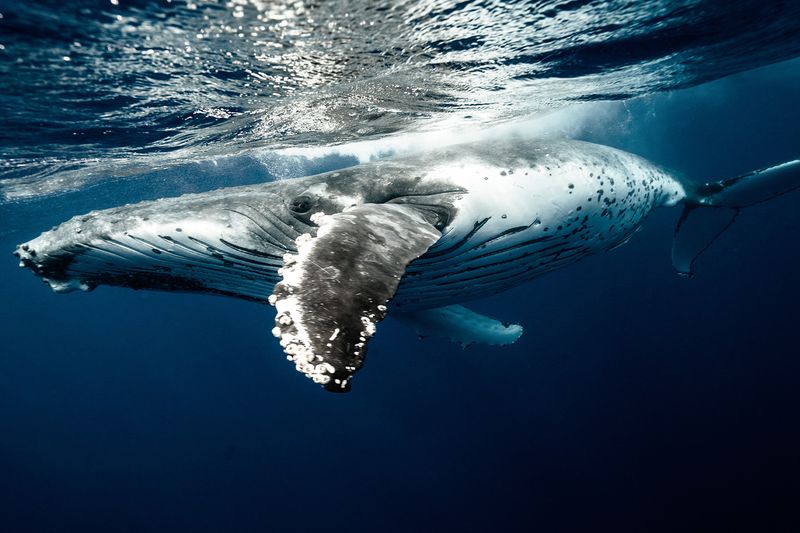
The blue whale is not just the largest mammal but the largest animal to have ever lived on Earth. These majestic creatures can reach lengths of up to 100 feet and weigh as much as 200 tons. Despite their enormous size, blue whales feed primarily on tiny krill. Their unique ability to communicate through low-frequency sounds allows them to connect over vast distances, making them true masters of the ocean. With a heart the size of a small car, the blue whale’s gentle nature is truly awe-inspiring. These ocean giants are a symbol of the sea’s grandeur.
Orca
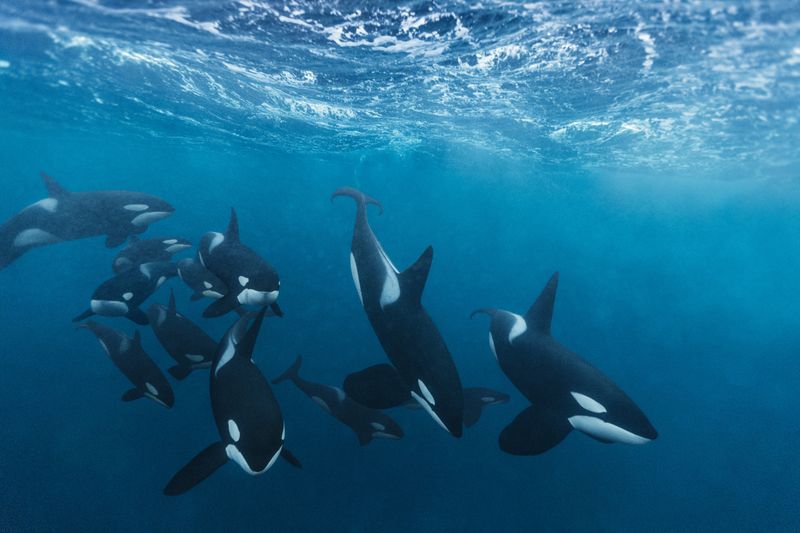
Known as the “wolves of the sea,” orcas are highly social and incredibly intelligent. They hunt in pods and have diverse diets, feeding on everything from fish to seals. These apex predators are known for their complex social structures and hunting techniques, which vary from pod to pod. While they are often seen as fierce predators, orcas exhibit a playful side, too. Watching them glide effortlessly through the water is a captivating sight. Their striking black and white markings make them one of the most recognizable marine mammals in the world.
Dolphin
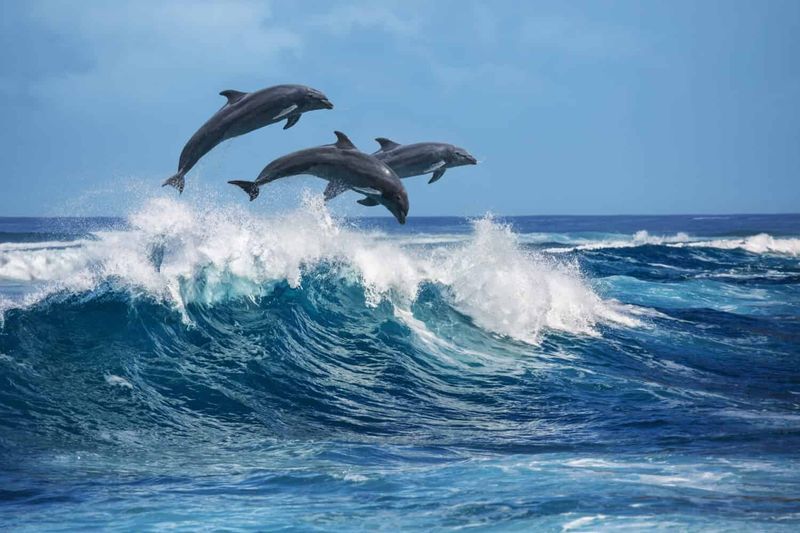
Dolphins are celebrated for their intelligence, social nature, and acrobatic displays. Often found in pods, they communicate through clicks and whistles, showcasing their advanced social skills. Known for their playful behavior, dolphins often approach boats and interact with humans. They are skilled hunters, using echolocation to locate and capture prey. This trait, combined with their agility, makes them formidable hunters of the sea. Dolphins are often considered the ambassadors of the ocean, symbolizing the playful and mysterious nature of marine life.
Sperm Whale
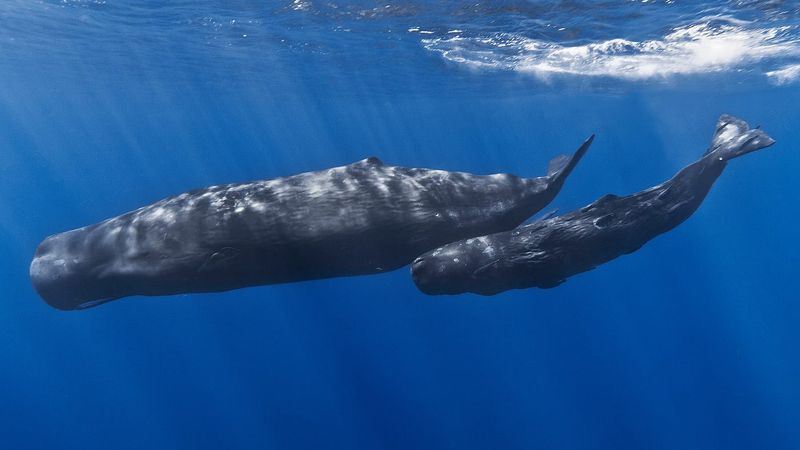
Sperm whales are deep-sea divers, known for their remarkable ability to descend to depths of over 3,000 meters. Their large heads contain a unique organ filled with a waxy substance called spermaceti, aiding in buoyancy and echolocation. These giants of the deep are known for their distinct clicks used in communication and hunting. Despite their size, sperm whales are elusive creatures, often found in family groups. Their mysterious nature and deep-sea prowess make them fascinating subjects of marine biology. They have inspired countless tales of the sea.
Humpback Whale
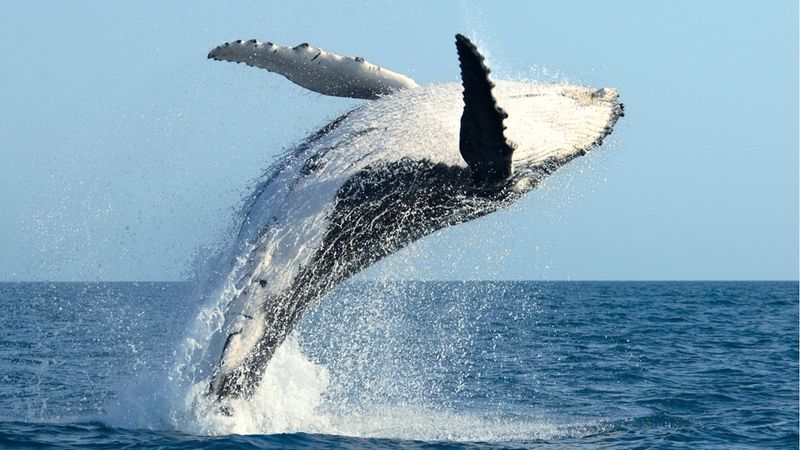
The humpback whale is renowned for its enchanting songs and acrobatic breaches. These gentle giants migrate thousands of miles between feeding and breeding grounds. Each humpback’s song is unique, often lasting up to 20 minutes and audible for miles. Their distinctive body shape, with long pectoral fins, aids in maneuverability, allowing for spectacular breaches. Humpbacks are known for their curiosity, sometimes approaching boats to investigate. Their friendly nature and melodic songs have made them favorites among whale watchers and marine enthusiasts alike.
Manatee
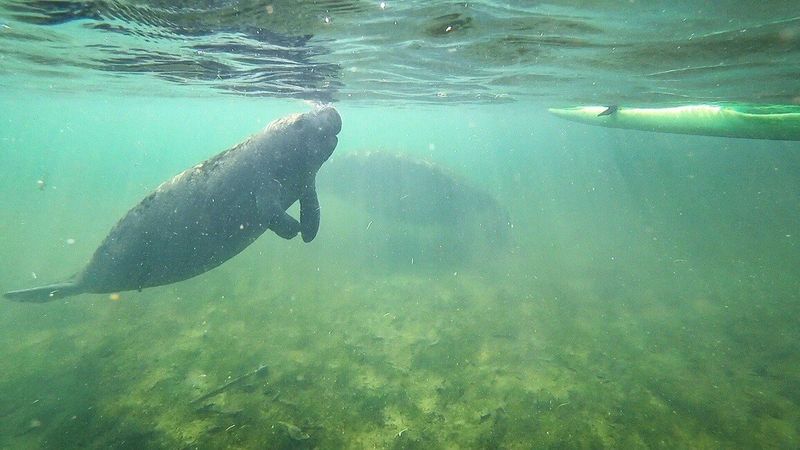
Often called “sea cows,” manatees are gentle herbivores found in warm coastal waters and rivers. They spend much of their time grazing on seagrasses and aquatic plants. These slow-moving creatures have a peaceful demeanor, often seen swimming lazily through the water. Manatees are curious and friendly, sometimes approaching humans in aquatic environments. Their large, round bodies and paddle-like flippers allow for easy navigation through their habitat. Despite their size, manatees are graceful swimmers and are vital to their ecosystems, helping to maintain healthy seagrass beds.
Narwhal
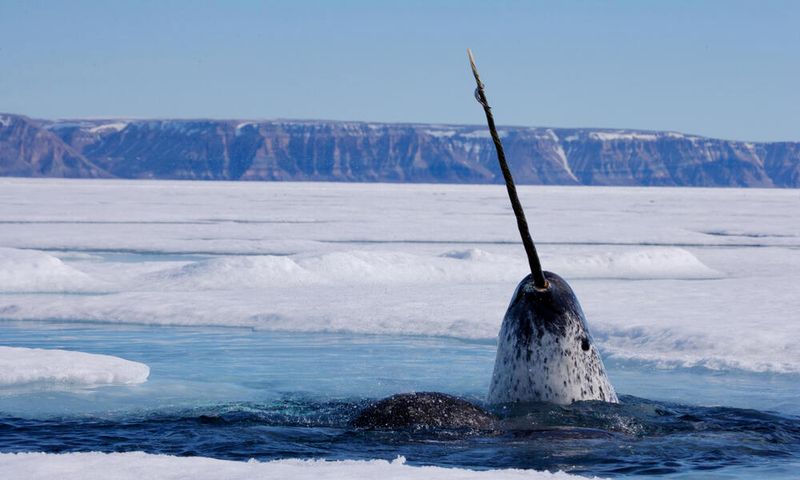
The narwhal, often dubbed the “unicorn of the sea,” is known for its long, spiral tusk. This unique feature is actually an elongated tooth, reaching lengths of up to 10 feet. Narwhals are deep divers, often found in Arctic waters, using echolocation to navigate the icy depths. They have a mysterious allure, as much of their behavior remains a mystery. Despite their formidable appearance, narwhals are gentle and social creatures, often traveling in groups. Their presence in the Arctic makes them a symbol of the region’s unique biodiversity.
Sea Otter

Sea otters are known for their playful antics and tool-using abilities. Found along the coasts of the northern Pacific Ocean, they have thick fur to insulate against cold waters. Sea otters often float on their backs, using rocks to crack open shellfish on their chests. Their social nature and endearing behavior make them favorites among marine wildlife enthusiasts. Despite their small size, sea otters play a crucial role in their ecosystems, keeping sea urchin populations in check to preserve kelp forests. Their playful demeanor and intelligence are captivating.
Gray Whale
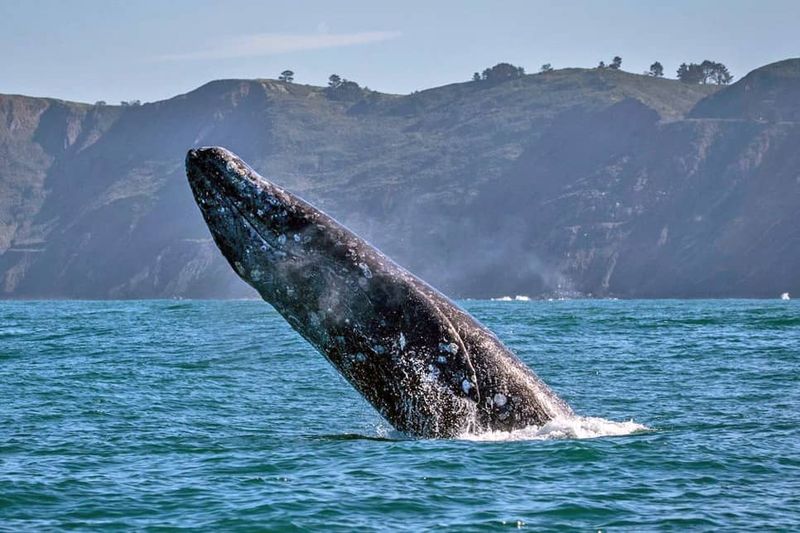
Gray whales are known for their long migrations, traveling between feeding grounds in the Arctic and breeding lagoons in Mexico. They are often seen skimming the ocean floor, feeding on small crustaceans. These gentle giants are known for their curiosity, sometimes approaching boats and interacting with humans. Their mottled gray skin, covered with barnacles and whale lice, gives them a distinctive appearance. Gray whales’ enduring journeys and intriguing behaviors make them a favorite among whale watchers. Their ability to navigate vast ocean distances is remarkable.
Harbor Seal
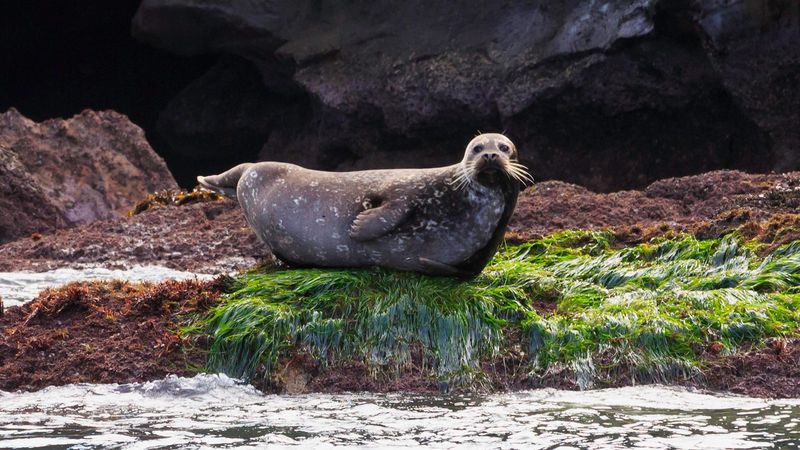
Harbor seals are versatile marine mammals found along coastlines and estuaries. They are known for their curious nature and adaptability to various environments. These seals spend time both in the water and on land, often seen basking on rocks or sandy beaches. Their spotted coats provide excellent camouflage against predators. Harbor seals are generally solitary but can be seen in groups during the breeding season. Their ability to thrive in diverse habitats makes them fascinating creatures of the coast. Their playful and inquisitive nature endears them to humans.
Walrus
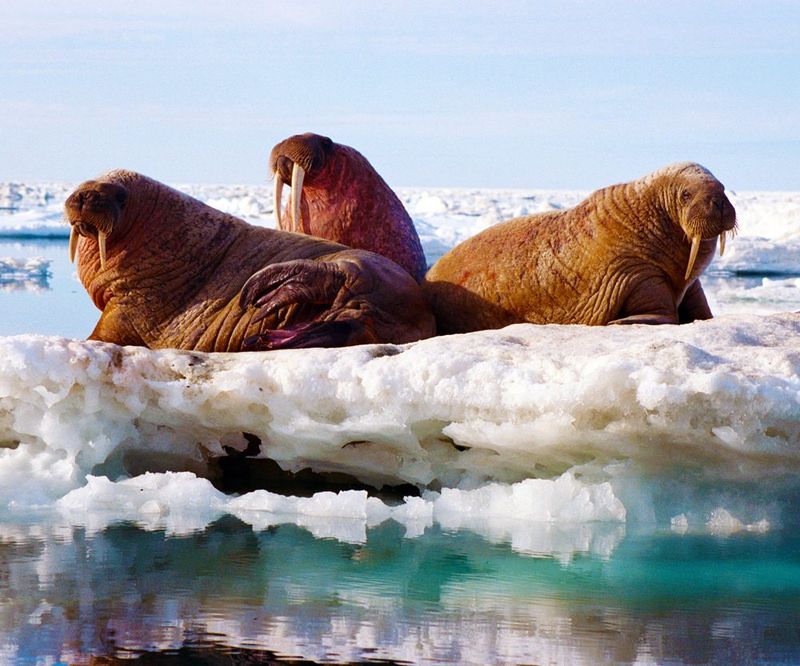
Walruses are iconic Arctic residents, known for their impressive tusks and whiskered faces. These tusks are used for hauling themselves onto ice and for defense. Walruses are social animals, often found in large herds, basking on ice floes. Their thick blubber provides insulation against the frigid Arctic waters. They are adept divers, feeding on the ocean floor for clams and other invertebrates. Despite their bulky appearance, walruses are agile swimmers. Their presence in the Arctic is vital for maintaining the ecosystem’s balance.
Sea Lion
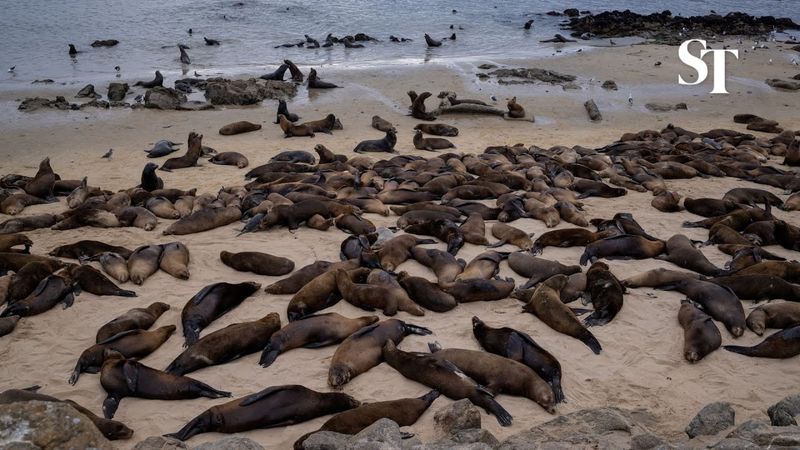
Sea lions are charismatic marine mammals, known for their playful behavior and loud barking calls. Found along coastlines, they are social creatures, often seen in large colonies. Sea lions are agile in the water, using their powerful flippers to propel themselves with ease. On land, they are often observed basking in the sun or engaging in playful interactions. Their adaptability to both marine and terrestrial environments showcases their remarkable versatility. Sea lions’ social nature and vocalizations make them a favorite among coastal visitors.
Dugong
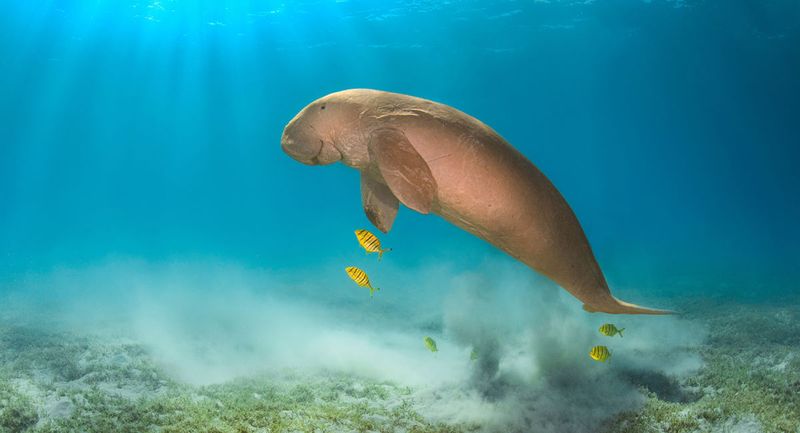
Dugongs are gentle marine mammals closely related to manatees, often found in warm coastal waters. They graze on seagrasses and are instrumental in maintaining healthy marine ecosystems. Dugongs have a streamlined body and a fluked tail, aiding in their graceful movement. Despite their shy nature, these creatures are social and often seen in small groups. Dugongs are culturally significant in many coastal communities, symbolizing protection and harmony with nature. Their gentle presence in tropical waters is a reminder of the ocean’s delicate balance.
Bottlenose Dolphin
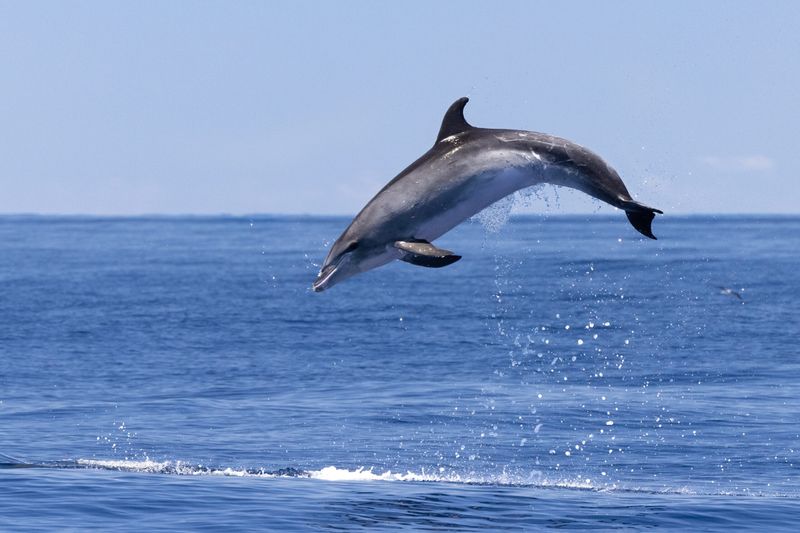
Bottlenose dolphins are highly intelligent and social, often seen riding waves and interacting with humans. Their distinctive curved dorsal fins make them easily recognizable. Bottlenose dolphins use echolocation for hunting and communication, showcasing their advanced cognitive abilities. They are often involved in cooperative hunting techniques, working together to round up fish. Their playful and curious nature has made them popular in marine parks and research studies. Bottlenose dolphins’ adaptability to various environments highlights their resilience and intelligence, making them iconic marine mammals.
Polar Bear
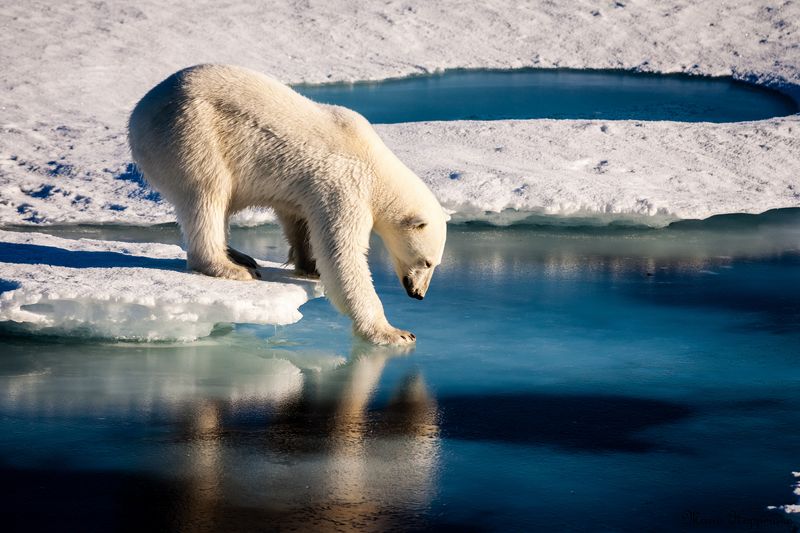
Polar bears are iconic symbols of the Arctic, known for their strength and adaptability. These massive mammals rely on sea ice to hunt seals, their primary food source. Despite their solitary nature, polar bears are curious and often explore their icy surroundings. Their thick fur and layer of blubber provide insulation against the extreme cold. Polar bears’ survival is closely linked to the health of the Arctic environment, making them key indicators of climate change. Their majestic presence on the ice captures the wild beauty of the polar regions.
Sea Turtle
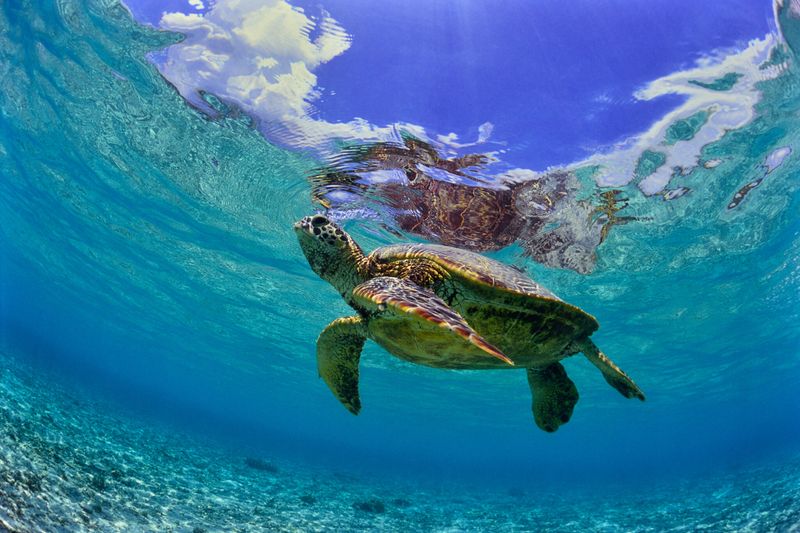
Although not a mammal, sea turtles deserve mention for their oceanic mastery. These ancient reptiles have roamed the seas for millions of years. Sea turtles are known for their long migrations, often returning to the beaches where they were born to lay eggs. Their streamlined shells and powerful flippers make them adept swimmers. Sea turtles play a crucial role in marine ecosystems, helping maintain healthy seagrass beds and coral reefs. Despite facing numerous threats, their resilience and tenacity continue to inspire conservation efforts worldwide.
Platypus
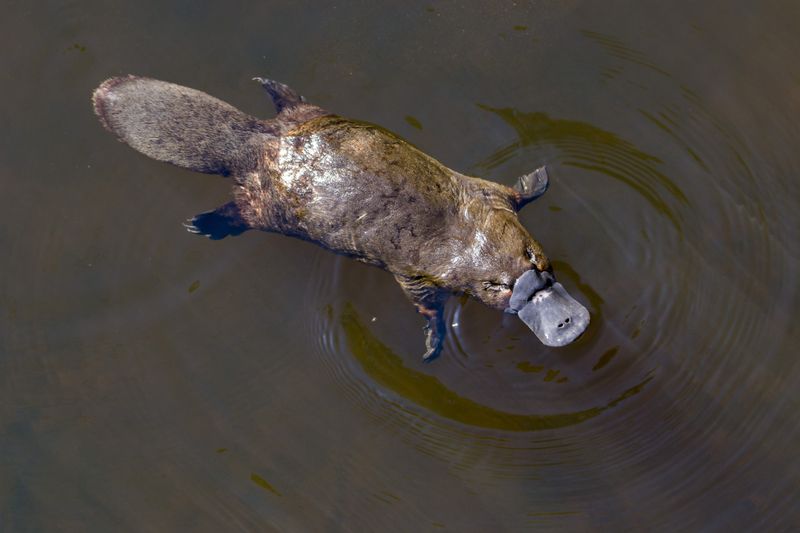
The platypus is a peculiar creature, combining features of mammals, birds, and reptiles. Found in freshwater environments in Australia, they are skilful swimmers, using their webbed feet to propel themselves. Platypuses are one of the few egg-laying mammals, making them unique among their peers. Their duck-like bills contain sensitive electroreceptors to detect prey in murky waters. Despite their unusual appearance, platypuses are incredibly well-adapted to their environment. This fascinating animal captures the imagination and showcases the diversity of life on Earth.
Pinniped Elephant Seal
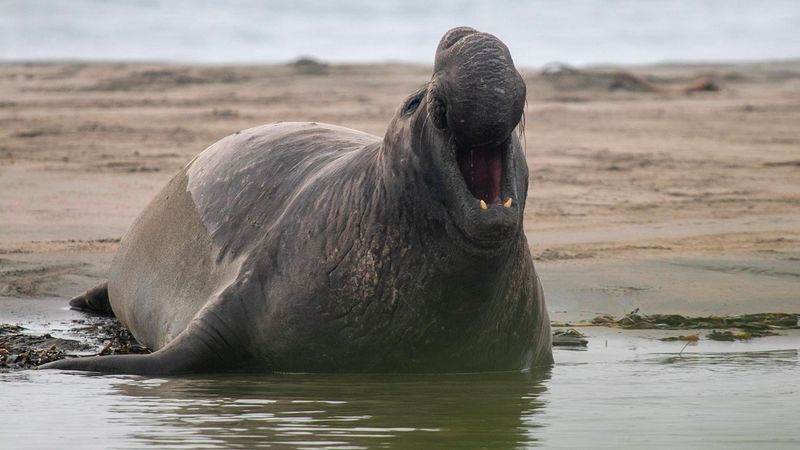
Elephant seals are among the largest pinnipeds, known for their impressive size and unique appearance. Males have a distinctive trunk-like nose, which they use to produce loud vocalizations during the breeding season. These seals are exceptional divers, capable of reaching depths of over 1,500 meters in search of food. Elephant seals spend most of their lives in the ocean, coming ashore only to breed and molt. Their ability to inhabit both marine and terrestrial environments highlights their adaptability. Elephant seals’ remarkable journeys capture the spirit of exploration.
Amazon River Dolphin
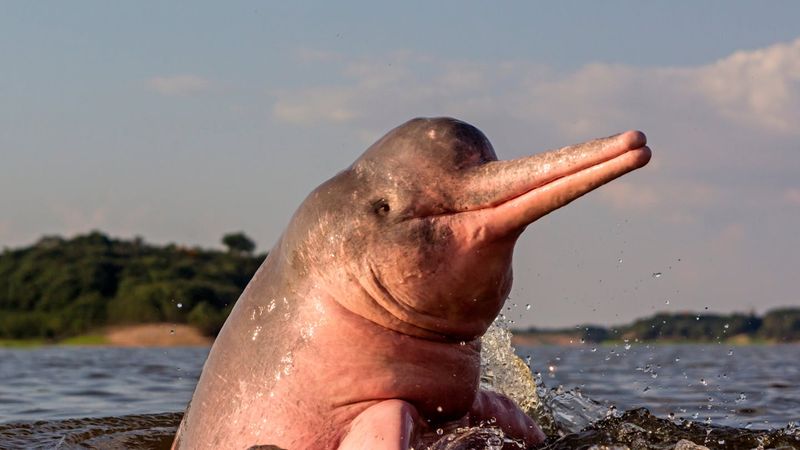
The Amazon river dolphin, or “boto,” is a captivating creature of South America’s river systems. Known for their pink coloration, these dolphins are highly intelligent and social animals. They navigate the complex waterways of the Amazon using echolocation, displaying impressive agility. Unlike their oceanic counterparts, river dolphins have flexible necks, allowing them to maneuver through dense vegetation. Their playful nature and unique appearance make them a symbol of the Amazon’s rich biodiversity. Despite facing threats from habitat destruction, they remain a fascinating subject of study.
Steller’s Sea Cow
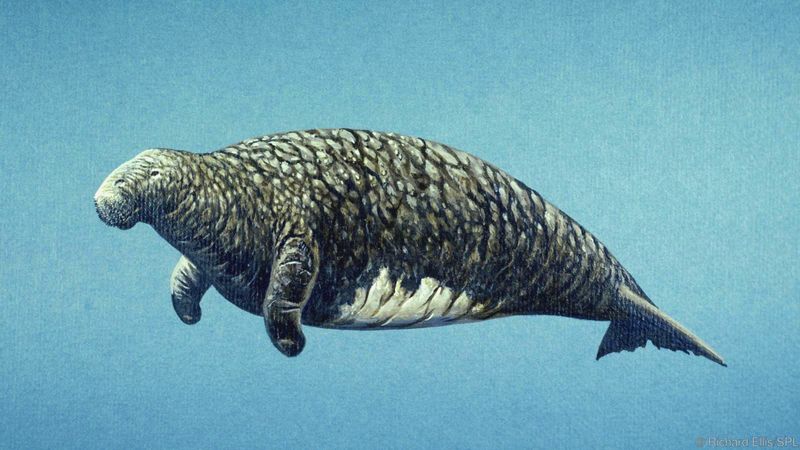
In the icy waters of the North Pacific, the gentle giant known as Steller’s Sea Cow once roamed. This massive marine mammal, now extinct, was a relative of the dugong and manatee.
Weighing over 10 tons and reaching lengths of up to 30 feet, it grazed peacefully on kelp. With a slow-moving and tranquil nature, it had no natural predators, relying solely on its size for protection.
Did you know? Steller’s Sea Cow was discovered in 1741 by explorer Georg Wilhelm Steller, but was hunted to extinction within 27 years of its discovery.

